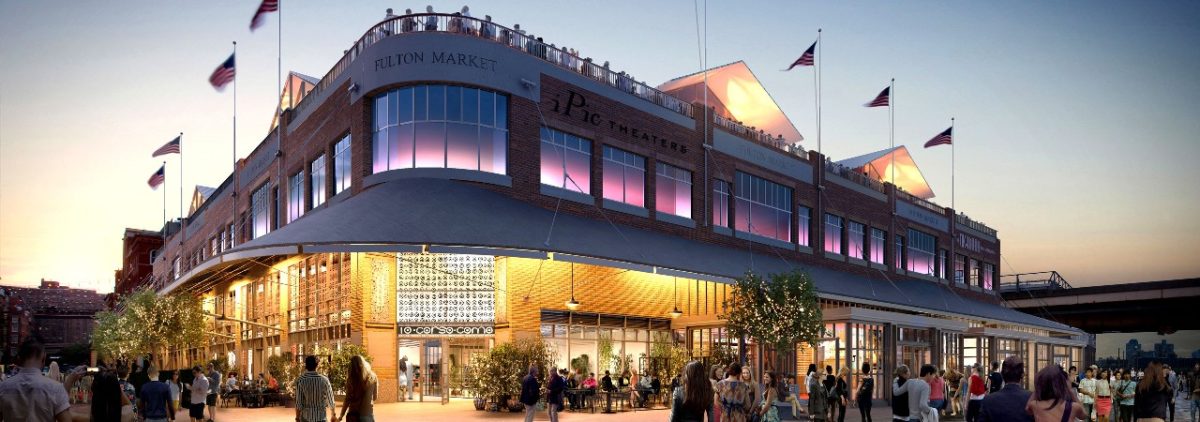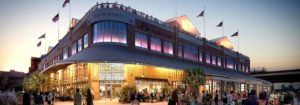South Street Seaport District
The Howard Hughes Corporation is proud to be a steward of the Seaport District NYC and help usher this dynamic neighborhood into the 21stcentury. With a commitment to restoration and an eye toward the future, the organization is helping the District reclaim its role as the heart of Lower Manhattan and the city as a whole.
The refurbished Tin Building, once home to one of the world’s largest fish markets and the future home of the Jean-Georges curated food market, will be painstakingly moved out of the floodplain and rebuilt piece by piece, restoring it to its 19th-century glory. The building, pushed back from the FDR Drive, will also include increased plaza space for both customers and local residents to enjoy.
For nearly four centuries, the South Street Seaport has been at the cutting-edge of commerce, a vibrant commercial and residential neighborhood that pays homage to the past while looking towards the future.
The Seaport can trace its roots to the 17th century, when the neighborhood served as a vital Dutch West India Company outpost connecting the new and old worlds. During these years, the trade at the Seaport helped catapult New York City’s economy into one of the most robust in the world.
By the 1860s, the Seaport was a 24/7 commercial hub, showing that New York was truly “the city that never sleeps.” Ships from this era can still be seen at the South Street Seaport Museum. The 19th century also saw the opening of the Fulton Fish Market, which became home to one of the nation’s busiest.
As shipping and trade transformed in the 20th century, so too did the Seaport. In the 1970s, the district pioneered a new urban renewal concept that historic buildings could be preserved while modern development occurred alongside it. This concept helped preserve Schermerhorn Row, historic buildings constructed in 1811 to facilitate growth at the Seaport.
More recently, the Seaport District has demonstrated its resilience as a dynamic commercial and residential hub. The neighborhood, along with the rest of Lower Manhattan, suffered in the aftermath of the September 11th attacks and Superstorm Sandy. Yet today, Lower Manhattan is the fastest growing neighborhood in the city.
Today, neighborhood residents and visitors are drawn to the Seaport for its top retail, dining, cultural and waterfront attractions as well as its unparalleled views of the Brooklyn Bridge and the city skyline. With continued investment in its revitalization, the Seaport District NYC will continue to thrive and serve as a beacon for the future.


